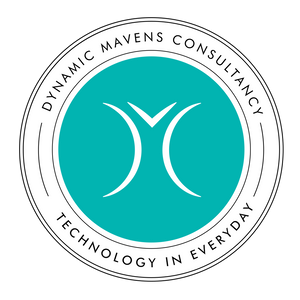What is a Virtual CIO and Why It Matters in Today’s Business Landscape
In an era where technology drives every aspect of business growth, the role of a Chief Information Officer (CIO) has never been more critical. However, not every organization has the resources or the need for a full-time CIO. Enter the Virtual CIO (vCIO) — a modern, strategic solution that offers businesses access to high-level IT leadership without the overhead of an on-site executive.
This blog delves into what a Virtual CIO is, how they work, their growing significance, and the industries benefiting from their expertise. Additionally, we explore their roles and the transformative outcomes they drive, while maintaining a balanced perspective on their relationship with traditional CIOs.
What is a Virtual CIO?
A Virtual CIO (vCIO) is an outsourced IT executive who collaborates with businesses to align technology strategies with organizational goals. Unlike an on-site CIO who is a full-time employee, a vCIO provides flexible, on-demand services tailored to a company’s unique needs.
They focus on:
- Strategic technology planning.
- IT infrastructure optimization.
- Risk management and compliance.
- Vendor management.
- Budgeting and cost efficiency.
vCIOs are not merely technical advisors; they are strategic partners who help businesses navigate the complexities of the digital age.
How Does a Virtual CIO Work?

A vCIO operates remotely, with occasional on-site visits, to provide strategic IT direction and oversee projects. Here’s how they typically work:
1. Initial Assessment:
- Evaluate the organization’s current IT infrastructure, processes, and goals.
- Identify pain points, gaps, and areas for improvement.
2. Strategic Planning:
- Develop a customized technology roadmap that aligns with the company’s objectives.
- Recommend tools, processes, and solutions for long-term success.
3. Execution Oversight:
- Supervise IT projects, ensuring timely delivery and optimal performance.
- Collaborate with in-house teams and external vendors.
4. Ongoing Support:
- Provide continuous IT monitoring and improvement.
- Offer strategic advice on emerging technologies and trends.
5. Risk Mitigation:
- Implement cybersecurity measures and compliance frameworks.
- Prepare disaster recovery and business continuity plans.
Why Are Virtual CIOs Gaining Popularity?
Businesses today face increasing technological complexity and rising operational costs. A vCIO offers a cost-effective, flexible alternative to a full-time CIO, enabling organizations to:
1. Access High-Level Expertise:
-
- Benefit from experienced IT leadership without long-term commitments.
2. Optimize Budgets:
-
- Save on salary, benefits, and overhead associated with an on-site executive.
3. Stay Competitive:
-
- Quickly adapt to market trends and technological advancements.
4. Focus on Core Operations:
-
- Allow in-house teams to concentrate on their primary responsibilities while the vCIO handles strategic IT initiatives.
Which Industries and Markets Benefit Most?
Certain industries and market segments are particularly well-suited for a Virtual CIO:
1. Small and Medium Businesses (SMBs):
-
- Often lack the resources for a full-time CIO but require strategic IT leadership.
- Benefit from scalable, on-demand solutions to support growth.
2. Retail and E-commerce:
-
- Need cutting-edge IT systems for inventory management, customer experience, and omnichannel strategies.
- Depend on a vCIO for seamless integration of platforms like Shopify and CRM tools.
3. Healthcare:
-
- Rely on vCIOs to ensure compliance with data protection regulations (e.g., HIPAA, GDPR).
- Require secure and efficient IT systems for patient records and telemedicine services.
4. Hospitality:
-
- Use vCIOs to enhance digital booking systems, CRM capabilities, and guest experiences.
5. Startups:
-
- Leverage vCIO expertise to build scalable IT infrastructures from the ground up.
6. Non-Profits:
-
- Benefit from cost-effective technology solutions to maximize their limited budgets.
Role of a Virtual CIO and the Outcomes They Drive
A vCIO’s role is multifaceted, focusing on:
1. Strategic IT Leadership:
-
- Aligns IT initiatives with business goals.
- Develops long-term technology roadmaps.
2. Cybersecurity and Compliance:
-
- Implements robust security measures.
- Ensures adherence to industry regulations.
3. Cost Optimization:
-
- Identifies opportunities to reduce IT expenses.
- Maximizes return on technology investments.
4. Digital Transformation:
-
- Guides organizations through adopting cloud solutions, AI, and other innovations.
5. Vendor Management:
-
- Evaluates, negotiates, and monitors third-party IT providers.
6. Key Outcomes:
-
- Improved operational efficiency.
- Enhanced cybersecurity posture.
- Increased agility in responding to market changes.
- Better alignment of IT strategy with business objectives.
Examples of Virtual CIOs in Action:
1. Retail E-commerce Growth:
-
- A Virtual CIO helped a mid-sized retailer implement an advanced inventory management system, reducing stockouts by 30% and improving customer satisfaction.
2. Startup Success:
-
- A tech startup leveraged a vCIO to design a scalable cloud-based IT infrastructure, supporting rapid growth without excessive upfront costs.
3. Healthcare Compliance:
-
- A Virtual CIO guided a regional healthcare provider through a successful transition to electronic medical records while ensuring full regulatory compliance.
Conclusion:
A Virtual CIO is not just a cost-saving alternative but a strategic asset for organizations looking to stay ahead in today’s technology-driven world. By offering flexible, high-level IT leadership, vCIOs empower businesses to innovate, optimize, and thrive.
Whether you’re a small business seeking to scale or an established company aiming to modernize, the Virtual CIO model is a forward-thinking approach to navigating the complexities of technology.
As the demand for strategic IT leadership continues to rise, Virtual CIOs are proving to be an invaluable resource for industries across the spectrum.

